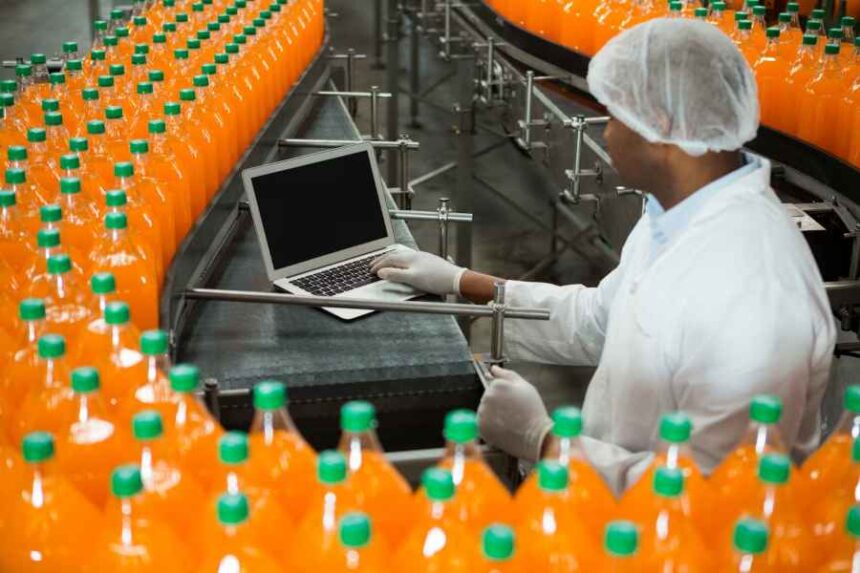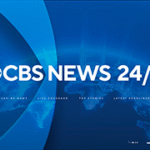Manufacturing efficiency hinges on the smooth operation of production lines. A well-balanced line is the cornerstone of productivity, cost-effectiveness, and quality output. Looking to streamline your production line? Let’s get into the nitty-gritty of line balance optimization and why the V-curve method is a tried-and-true winner.
To really make the most of your production line, you need to master the art of line balancing. Here’s a detailed look at why it’s essential in lean manufacturing, plus the nuts-and-bolts strategies to achieve fluid production. Break free from inefficiencies by recalculating takt time and infusing your production line with cutting-edge AI vision technology – we’ll show you how.
Whether you’re green or a seasoned veteran, these operational know-hows will help you clear the way for a leaner, meaner manufacturing machine. Imagine your production line humming along like a well-oiled machine. That’s what happens when you crack the code of line balance optimization. We’ll show you how to make it a reality.
Understanding Line Balance Optimization
Line balance optimization is a strategic approach to harmonizing workstations within a production line. It’s about synchronizing operator and machine time with takt time — the rhythm at which products must be completed to meet customer demand.
The goal? To create a seamless flow where each station works in concert, minimizing bottlenecks and idle time. This synchronization is crucial for:
- Maximizing resource utilization
- Reducing work-in-progress inventory
- Enhancing overall production efficiency
When executed effectively, LineView’s line balance optimization can transform a sluggish production line into a well-oiled machine. Think of productivity as a marathon, not a sprint. You want to strike a balance that keeps your workers and machinery in high gear without pushing them to the breaking point.
Consider a car assembly line. Without proper balance, you might see engines piling up at one station while workers at another station wait for parts. Line balance optimization tightens up the rough edges, crafting a seamless journey from start to finish.
To achieve this, manufacturers must:
- Analyze current processes
- Identify bottlenecks and excess capacity
- Redistribute tasks and resources
- Continuously monitor and adjust
By focusing on these areas, companies can significantly improve their production output and quality while reducing costs and lead times.
The Significance of the V-Curve in Line Balancing
Line balance optimization just got a lot easier with the V-curve in your corner. It visually represents the relationship between the number of workstations and the efficiency of a production line.
This distinct shape is where the V-curve gets its namesake. As you plot efficiency against the number of workstations, you typically see a V-shaped graph. The bottom of the ‘V’ represents the sweet spot—the point where you have the ideal number of workstations for maximum efficiency.
Remember, the goal isn’t always to reach the absolute bottom of the ‘V’. Sometimes, practical constraints or future scalability needs might lead you to choose a point slightly off the optimum.
Key Benefits of Line Balance Optimization
Manufacturers who unlock the full potential of line balance optimization can expect a seismic shift in their operations, as previously hidden inefficiencies are rooted out and resources are redirected towards driving real growth. The biggest perks are up next, so stay tuned.
Increased Productivity
- Smoother workflow leads to higher output
- Reduced idle time means more units produced per hour
- Balanced workload keeps all stations operating efficiently
Cost Reduction
- Less waste in terms of time and materials
- Optimized use of labor and equipment
- Reduced need for overtime or additional shifts
Improved Quality
- Consistent pace reduces errors caused by rushing or fatigue
- Easier to maintain quality standards across all stations
- More time for proper quality checks at each stage
Enhanced Flexibility
- Easier to adapt to changes in demand
- Quicker response to product variations
- Simpler to implement process improvements
Better Resource Utilization
- Maximized use of both human and machine resources
- Reduced equipment downtime
- Optimal allocation of skills and capabilities
By focusing on these benefits, manufacturers can create a more efficient, cost-effective, and responsive production environment. By ironing out production wrinkles, you’ll be astonished at how harmony on the production floor transforms into wins in customer loyalty and gaining an edge on the competition.
Steps to Achieve Line Balance Optimization
To get the perfect balance on your production line, you need to methodically examine and implement a series of careful adjustments. Take your production line from mediocre to magnificent with this straightforward, actionable guide that leaves no stone unturned.
Calculate Takt Time
- Determine available production time
- Assess customer demand
- Divide available time by demand to get takt time
Conduct Time Studies
- Measure the time for each task in the production process
- Use stopwatches, video analysis, or advanced IoT sensors
- Collect data over multiple cycles for accuracy
Create a Precedence Diagram
- Map out the sequence of tasks
- Identify dependencies between tasks
- Visualize the flow of work through the line
Identify Bottlenecks and Excess Capacity
- Compare task times to takt time
- Spot stations that exceed or fall short of takt time
- Note any accumulation of work-in-progress
Redistribute Tasks
- Group tasks to match takt time when possible
- Consider skill levels and ergonomics
- Aim for a balanced workload across stations
Remember, line balance optimization is not a one-time event. Staying ahead of the curve means accepting that it’s a process without an endpoint – it’s a matter of iterative refinement. As products change, demand fluctuates, or new technologies emerge, you’ll need to revisit your line balance to maintain peak efficiency.
Keep your production line supple and strong by adopting a growth-oriented mentality. Constantly assess, adapt, and refine your processes to capitalize on both unplanned disruptions and unforeseen windfalls, ensuring a nimble response to an uncertain future.
Common Challenges in Line Balance Optimization
While the benefits of line balance optimization are clear, the path to achieving it is often fraught with challenges. To move forward, you’ve got to confront and resolve these problems squarely. Here are some common challenges you might encounter:
Resistance to Change
- Employees may be reluctant to alter established routines
- Management might hesitate to invest in new processes
- Solution: Communicate benefits clearly and involve staff in the optimization process
Variability in Product Mix
- Different products may require varying processing times
- Frequent changeovers can disrupt line balance
- Solution: Implement flexible workstation designs and cross-train employees
Skill Level Discrepancies
- Operators may have different skill levels and work speeds
- Specialized tasks might create bottlenecks
- Solution: Provide targeted training and consider job rotation strategies
Equipment Limitations
- Outdated or inflexible machinery can hinder balance efforts
- Inconsistent machine performance may cause unpredictable delays
- Solution: Invest in adaptable equipment and implement robust maintenance programs
Data Accuracy and Collection
- Inaccurate or incomplete data can lead to flawed optimization decisions
- Manual data collection can be time-consuming and error-prone
- Solution: Implement automated data collection systems and regular data audits
By anticipating these challenges, you can develop strategies to overcome them before they derail your line balance optimization efforts. Remember, the goal is not perfection from the outset, but continuous improvement over time.
Foster a culture of transparency within your team, where problems are tackled head-on the moment they surface. Often, the best solutions come from those working directly on the production line. Picture this: every obstacle becomes an invitation to tweak, tune, and augment your approach. By embracing this growth mindset, you can wring out novel solutions and unexpected opportunities from what initially seemed like snares.
Future Trends in Line Balance Optimization
Manufacturing’s increasingly intricate dance of machines and processes has sparked a powder keg of innovation in line balance optimization, and it’s about to explode in a big way. Why get left behind? Anticipate these trends and put your organization in the driver’s seat. Get ready for liftoff with these industry-shaking advancements on the near horizon.
Artificial Intelligence and Machine Learning
- AI algorithms will provide more accurate predictions of line imbalances
- Machine learning models will adapt to changing production conditions in real-time
- Automated decision-making systems will suggest optimal line configurations
Internet of Things (IoT) Integration
- Increased use of smart sensors for real-time data collection
- Enhanced connectivity between machines, systems, and operators
- Improved ability to track and optimize micro-movements within workstations
Advanced Robotics and Cobots
- More flexible robotic systems that can easily switch between tasks
- Collaborative robots (cobots) working alongside humans for optimal balance
- AI-driven robots that can learn and adapt to new tasks quickly
Virtual and Augmented Reality
- VR simulations for testing line balance configurations
- AR overlays providing real-time guidance to operators
- Immersive training experiences for new line balance implementations
Predictive Analytics
- Forecasting potential line imbalances before they occur
- Proactive maintenance scheduling to prevent disruptions
- Dynamic adjustment of line balance based on predicted demand fluctuations
As these trends develop, manufacturers will need to stay informed and adaptable. The time has come to reboot line balance optimization. By accounting for ecological footprint, worker welfare, and rapid market shifts, organizations can not only optimize production but also future-proof their operations for the long haul.
By embracing these emerging trends and technologies, manufacturers can position themselves at the forefront of production efficiency and innovation. Manufacturing processes are on the cusp of a massive upheaval, thanks to the explosion of innovation in line balance optimization. We’re not just talking about incremental improvements – we’re talking about a total overhaul.
Conclusion
With balancing acts going on in the background, manufacturing facilities can hit the sweet spot of maximum efficiency, simultaneously boosting productivity, trimming costs, and perfecting the craft of producing exceptional goods. -Line balancing know-how paired with V-curve insights can reshape the factory floor, banishing bottlenecks and turbocharging production.
With line balance always in our crosshairs, we’ve learned to stay vigilant, poring over data and making subtle adjustments to stay ahead of the curve. Building a winning strategy demands three essential components: forward-thinking planning, clever use of technology, and a zealous drive to continuously perfect your craft. With this approach, the advantages are impossible to ignore – from operational improvements to a noticeable spike in team happiness.




